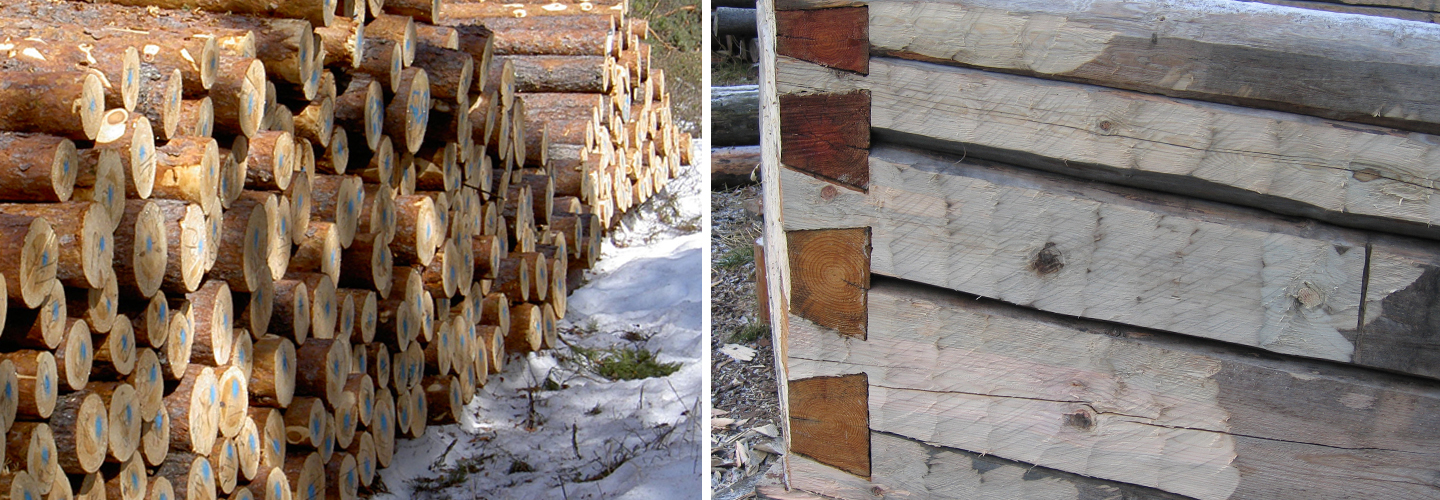Trees to be used as building logs should be felled in February or March, because then the wood material is as dry as it naturally gets. This timing also avoids the disadvantages caused by mould fungi. Straight trees with dense grains and evenly thick trunks are preferred. The tree should also be checked for spiral grain. The drying of wood before final debarking can also be expedited by partial peeling similar to debarking in strips. In this case, the wood dries more slowly and exhibits less cracking.

Pine is still the most commonly used wood species for log construction in Finland. Logs with the densest grains and most resin are used for structures that will come under the biggest stress, such as lower logs and ones under windows. Spruce is not as popular as a building log material due to its twisting. Spruce can be used if it is selected carefully. Long, slow-grown spruce trees with few branches and thick grey bark should be chosen as building logs.
Even though the frame of the building is made of pine logs, the load-bearing beams and roof joists are preferably made of spruce. Spruce has proven to be more resilient than pine, and it has a better load-carrying capacity. A spruce frame should be left to dry with open window openings over one summer.
Aspen logs have traditionally been used to build barns and sheds, and they have proven to be durable in these uses. Over the decades, the surface of the aspen turns permanently silver grey like in dead standing trees. The logs also become longitudinally twisted over the years. Aspens should be felled without debarking or limbing them in the late summer to promote drying (the trunks are only limbed when moisture has evaporated from the foliage).
There is only a limited amount of dead standing trees available nowadays, and their supply has also reduced due to environmental protection reasons. The use dead standing trees in construction should therefore be reduced. They can be replaced by using large pine, spruce and larch logs.